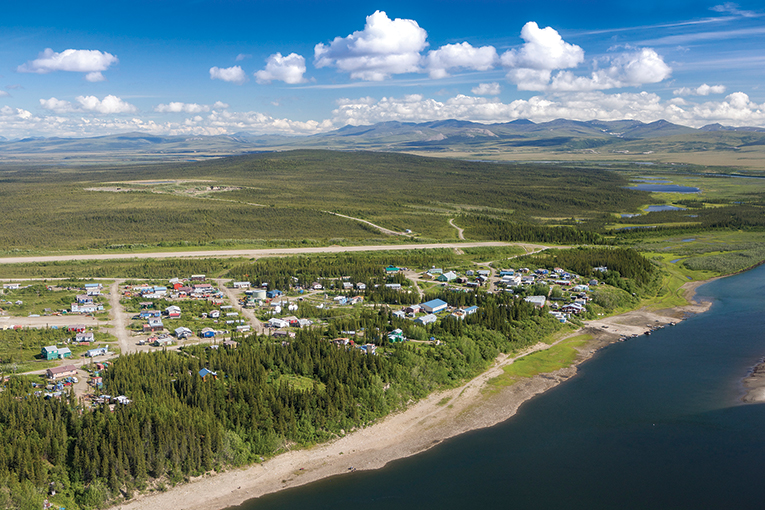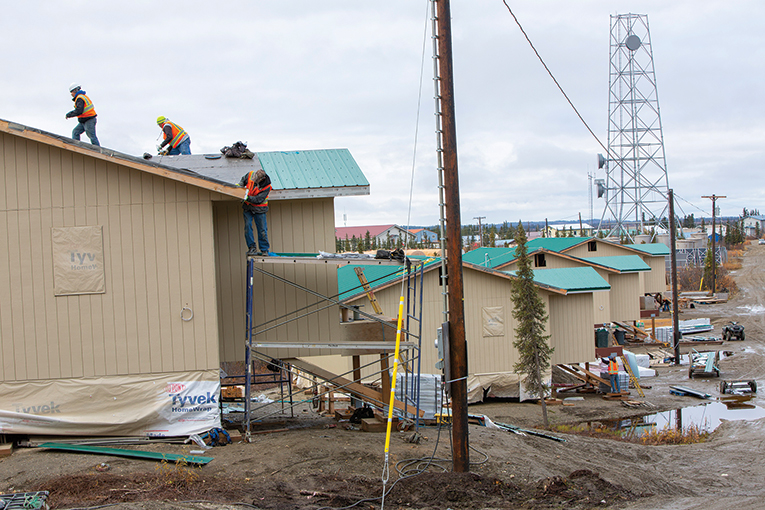Remote communities have long relied on diesel generators for power, as they are not typically connected to main grids. Diesel generation is loud, costly, produces greenhouse gasses and is prone to interruption. This can impact not only simple daily activities, like cooking and charging cellphones, but also the functioning of essential services such as healthcare, education, food storage, transportation and communication. There is also a strong desire to transition to renewable sources of energy to reduce carbon footprint and negative impacts on the local environment.
But this isn’t a simple endeavor. According to a report by Intelligent Energy Systems prepared for the Alaska Energy Authority, “Over the last 10 years, considerable investments have been made in hybrid wind-diesel systems for such villages in Alaska – many of which have proven to be marginally economical. This is primarily because the renewable contributions and associated fuel displacements are restricted by the inability to fully deactivate the diesel engine generators. Integrating renewables like wind and solar into remote diesel-based power systems presents unique challenges requiring the maximization of renewable penetration while ensuring stable and cost-effective electrical power service.”
Navigant Research, in its annual global Microgrid Deployment Tracker for 2019, estimates nearly 20 GW of capacity is now managed on microgrids. While major utilities account for 40 percent of new capacity, remote microgrids contribute a whopping 34 percent.
Why the surge in adoption? In fact, remote communities around the world have long operated independent power systems – they simply weren’t called microgrids until more recently. Traditionally powered with dirty, high-cost diesel generation, today’s microgrids typically seek to operate with high contributions of economically-viable and clean renewable generation. And remote communities have led the way toward a low-carbon solution because of the disproportionately high impacts of fossil-fuel based generation to their way of life.
One example is Deering, Alaska, located on the Kotzebue Sound just south of the Arctic Circle. At this high latitude, daylight levels vary dramatically from season to season. In June or early July, the sun does not set, and in December, daylight may last less than four hours. Winter storms are common, and with temps as low as -50F, this tough Arctic community does not shut down even for such weather.

Photo credit: Chris Arend
Situated on a flat sand and gravel spit 300 feet wide and a three-quarters of a mile long, the 163 people living in Deering rely on barge service to provide consumer goods during the summer between July and mid-October. The ocean and waterways are frozen and covered in ice the remaining nine months of the year, and any goods must be delivered via air service, including food and fuel, increasing costs significantly. Primarily a subsistence community relying on the surrounding natural resources, the economy of Deering employs only 54 people, mostly in education, health care and public administration. Combined with the high cost of living, residents typically have limited discretional income.
Living in rural Alaska is expensive. Grocery items cost nearly 1.5 times as much as similar items in Seattle. Fresh milk is not always available and boxed milk may cost more than $6 a half gallon. Potato chips cost as much as $9 a bag, laundry detergent nearly $50 a jug and a quart of motor oil exceeds $25.
This also translates to more expensive energy costs. With no road transport, fuel can easily be more than $6 a gallon. Delivery via air transport will add another $2 to the cost of each gallon. With the daily wellbeing of Deering residents dependent on the ability to generate electricity and heat from continuously operated diesel engines and burners, the cost of fuel influences the cost of living disproportionately and electricity rates are more than $0.70/kWh without subsidies.
These compounded economic restraints have motivated Deering to incorporate renewable resources to offset the high cost of conventional diesel generation. With 100kW of wind generation installed in 2016 and then another 50kW of solar added in 2019, Deering’s renewable generation resources regularly exceed their average load. Such high penetrations of renewable generation can introduce system instabilities resulting in poor power quality or unplanned outages and can minimize or largely erode the economic benefits of renewables.
In order to fully reap the benefits of these environmentally-friendly resources, the community of Deering created one of the most advanced microgrids in the world, utilizing an Energy Management System (EMS) The highly configurable EMS microgrid control system, which was developed by a Switzerland-based technology provider, now manages the economic dispatch and sophisticated automation of Deering’s hybrid power system while ensuring secure power with optimal renewable contribution. Combined with the grid-forming energy storage system, this cutting edge microgrid operates with up to 100 percent renewables by automatically turning the diesels off when the conditions are right.

Photo credit: Chris Arend
By operating up to 30 percent of the year in diesel-off mode, the community of Deering expects to see significant savings on their electric bills. Combined with similar efforts in nearby communities of Kotzebue and Buckland, the region estimates they’ll reduce carbon emissions by as much as 305 metric tons annually.
For Chris Moto, Deering’s power plant operator, there’s a new-found pride in his job. He can now give plant tours of the diesel powerhouse without hearing protection because it’s no longer needed when operating with 100 percent renewable energy. Big and small utilities from around the world are learning from Chris’ experience how they can achieve their local Renewable Portfolio Standards. And he’s already strategizing on how to add even more renewables to his power system.
Among younger members of the community, it’s hard to remember a time when the diesel engines weren’t running in the background. Just one of the four diesel engines generates as much noise as big city traffic, or about 85 decibels. And the few times they do remember the silence of the generators being off, the lights in the community were off too because there was no power. But today, the pristine Arctic landscape of Deering can be enjoyed without sacrificing either the serenity of the sounds of the nearby ocean or the need for reliable power. Now, when the diesels are off, the lights in Deering are still on.
Key advantages of microgrid deployment for remote communities:
- Ensures reliable, uninterrupted and quality power availability
- Maximizes fuel savings through the highest possible renewable integration
- Optimized cost by reducing fossil fuel consumption
- High power quality by stabilizing the power systems against fluctuations in voltage and frequency
- Achieves a secure and sustainable energy mix, together with energy optimization and management
- Fast and safe installation and commissioning
As a pioneer in energy management and optimization, the previously mentioned Swiss company’s grid edge solutions are leading energy innovation and transition around the world, from utilities and service providers who want to effectively manage their increased portfolio of renewables and distributed energy resources, to islands and remote communities seeking energy autonomy, as well as commercial and industrial sites who want to unlock new economic opportunities. The company’s grid edge solutions’ global installed base covers more than 470 MW and 170 reference sites.
 Group Senior Vice President and Head of Grid Edge Solutions Product Group at ABB, Maxine Ghavi has more than 25 years of experience, holding various leadership roles in program and project management, business and market development, product management, business operations and marketing and sales. Her deep domain knowledge spans the breath of the power industry including grid edge technologies, microgrids, storage, renewables, software and semiconductors. Prior to working with ABB, she was head of business management at Oerlikon Solar, VP of sales at Voyan Technology and senior product manager at KLA-Tencor. Ghavi received her bachelor's degree in physics from San Jose State University in California.
Group Senior Vice President and Head of Grid Edge Solutions Product Group at ABB, Maxine Ghavi has more than 25 years of experience, holding various leadership roles in program and project management, business and market development, product management, business operations and marketing and sales. Her deep domain knowledge spans the breath of the power industry including grid edge technologies, microgrids, storage, renewables, software and semiconductors. Prior to working with ABB, she was head of business management at Oerlikon Solar, VP of sales at Voyan Technology and senior product manager at KLA-Tencor. Ghavi received her bachelor's degree in physics from San Jose State University in California.






